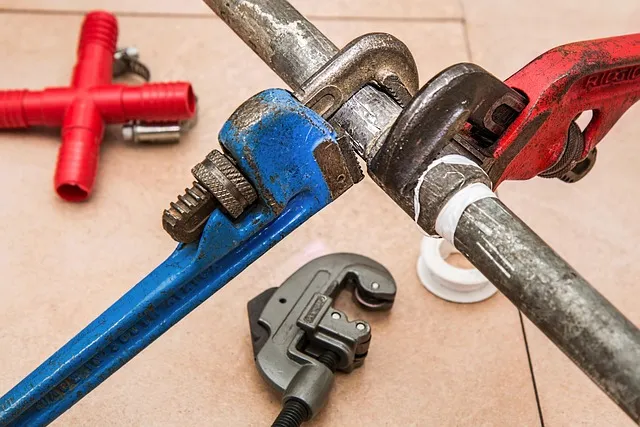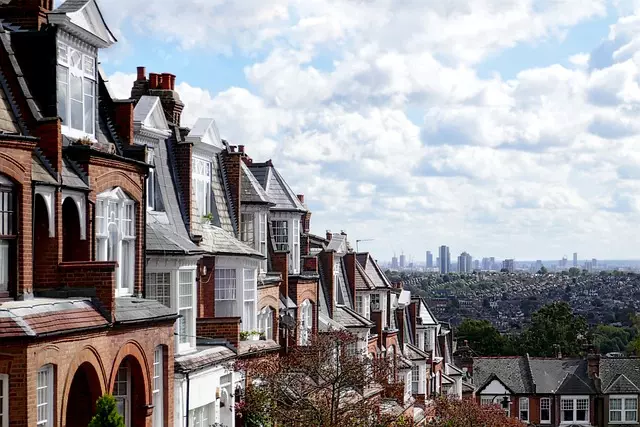Residential Foundation Repair is crucial for homes built on concrete slabs, addressing structural instability caused by soil shifting, weather, and poor construction. Techniques like piercing and injecting epoxy, steel reinforcement bars, underpinning, and slab jacking stabilize the foundation, preventing costly repairs. Early detection through regular inspections is vital; proactive measures save expenses and ensure long-term structural integrity. Balancing cost and savings, non-invasive methods offer efficient stabilization without disruption. Homeowners should prioritize foundation health for property value preservation and financial benefits.
“Unstable foundations can be a homeowner’s worst nightmare, leading to costly repairs and potential structural damage. This comprehensive guide delves into the world of concrete foundation stabilization, offering insights on common issues plaguing residential properties. We explore the causes of instability, emphasizing early detection as a key strategy for effective repair. From traditional techniques to modern, minimally disruptive methods, we provide an in-depth look at stabilizing your home’s foundation. Additionally, cost considerations and maintenance tips ensure homeowners are equipped with the knowledge for long-term stability.”
Understanding Concrete Foundation Stabilization: A Brief Overview

Concrete Foundation Stabilization is a crucial process in residential foundation repair, addressing the structural integrity of homes built on concrete slabs. This method involves various techniques to stabilize and reinforce the foundation, ensuring it can withstand environmental factors like shifting soil, expansive clays, and heavy rainfall, which can cause cracks and unevenness. By understanding this concept, homeowners and professionals alike can take proactive measures to preserve the longevity of a structure.
The process typically includes methods such as piercing and injecting epoxy or polyurethane into existing concrete cracks to fill them, preventing further damage and creating a stable barrier. Additionally, steel reinforcement bars or mesh can be installed to enhance the foundation’s strength. These solutions not only stabilize the foundation but also provide long-lasting repair, ensuring the structural integrity of residential properties.
Common Causes of Residential Foundation Instability

Residential foundation instability can stem from a variety of factors, often related to the unique challenges posed by varying climates and soil types. One of the most common causes is poor initial construction, where subpar materials or inadequate techniques lead to weak foundations susceptible to shifting over time. For instance, using unsuitable concrete mixes or failing to properly compact the soil before pouring can result in a foundation that doesn’t have the strength or stability required to support a structure.
Another significant contributor is ground movement caused by changes in moisture levels and temperature. Soils expand and contract with these fluctuations, putting stress on foundations. This is particularly problematic in regions with high humidity or fluctuating weather patterns. Additionally, improper drainage around the home can exacerbate the issue by leading to water accumulation, which weakens soil structures and further compromises foundation stability, necessitating residential foundation repair solutions.
The Importance of Early Detection in Foundation Repair

Early detection is key when it comes to residential foundation repair. Even minor cracks or signs of movement in a home’s foundation can indicate underlying issues that, if left unchecked, could lead to significant structural damage over time. Regular inspections are essential for homeowners to stay ahead of potential problems, as they allow for prompt intervention and prevent the need for more extensive and costly repairs later on.
In many cases, subtle changes in a foundation’s stability may go unnoticed until the problem escalates. By being proactive and scheduling routine assessments, residents can ensure that any issues are addressed early on, ultimately saving time and money. This is especially crucial in regions prone to shifting soil conditions or extreme weather events, where foundations are more susceptible to damage and settlement.
Techniques for Stabilizing Your Home's Foundation

Stabilizing your home’s foundation is a critical aspect of residential foundation repair, ensuring structural integrity and long-term durability. There are several effective techniques to achieve this goal, each tailored to specific needs and types of foundation issues. One common method involves underpinning, where additional support is added beneath the foundation to correct any settling or shifting. This process typically includes drilling pilot holes and installing steel rods or helical piles to reinforce the existing structure.
Another popular approach is slab jacking, ideal for repairing cracked or uneven slabs. This technique lifts and levels the concrete by pumping a polymeric material under pressure into the voids between the slab and the soil. For more severe cases, foundation replacement might be necessary, involving the complete removal and reconstruction of the existing foundation to create a stable, lasting solution. Regular inspection and maintenance are key; addressing issues early can prevent more costly repairs down the line.
Non-Invasive Methods: Minimally Disruptive Repairs

When it comes to concrete foundation stabilization, non-invasive methods offer a range of options for repairing residential foundation issues with minimal disruption. These techniques are particularly useful for homeowners looking for quick and efficient solutions without the extensive excavation or structural alterations that traditional foundation repair methods may require. By employing advanced technologies and innovative materials, professionals can now address cracks, settlement, and other common problems with less impact on the property and surrounding environment.
Minimally disruptive repairs include techniques like foundation underpinning, where support is added from below to stabilize the concrete. This process involves installing pilings or columns to redistribute the load and prevent further movement. Another approach is epoxy injection, which fills cracks and gaps with a strong, durable epoxy compound, effectively sealing them and preventing water intrusion. These non-invasive methods not only provide structural support but also preserve the aesthetics of the home’s foundation, making them ideal for those seeking discreet yet effective residential foundation repair solutions.
Cost Considerations and Long-Term Savings

When considering concrete foundation stabilization, a key factor for homeowners is the balance between cost and long-term savings. While initial expenses for residential foundation repair can vary widely depending on the severity of the issue and the scope of work required, investing in foundation stabilization pays off over time.
A stable foundation prevents costly structural damage caused by shifting soil or uneven settling, which can be a common problem in areas with variable climates or unstable terrains. By addressing foundation issues early through specialized techniques like underpinning, piering, or slab jacking, homeowners avoid the need for more extensive and expensive repairs down the line. This proactive approach not only preserves the structural integrity of the home but also maintains its value, ensuring long-term financial benefits.
Maintaining a Stable Foundation: Tips for Homeowners

A stable foundation is integral to any residential property, ensuring structural integrity and longevity. Homeowners can take several proactive steps to maintain their home’s foundation stability. Regular inspection is key; observing any cracks, unevenness, or signs of settlement can help identify potential issues early on. Addressing these problems promptly through professional Residential Foundation Repair services can prevent further damage.
Another crucial aspect is proper drainage. Ensuring water doesn’t pool around the house, especially in areas near foundations, is essential. This involves maintaining adequate gutter systems and installing proper landscape drainage to redirect water away from the foundation. Additionally, keeping the soil around the foundation well-compacted and using appropriate materials for filling dips or holes can contribute to a more stable base.
